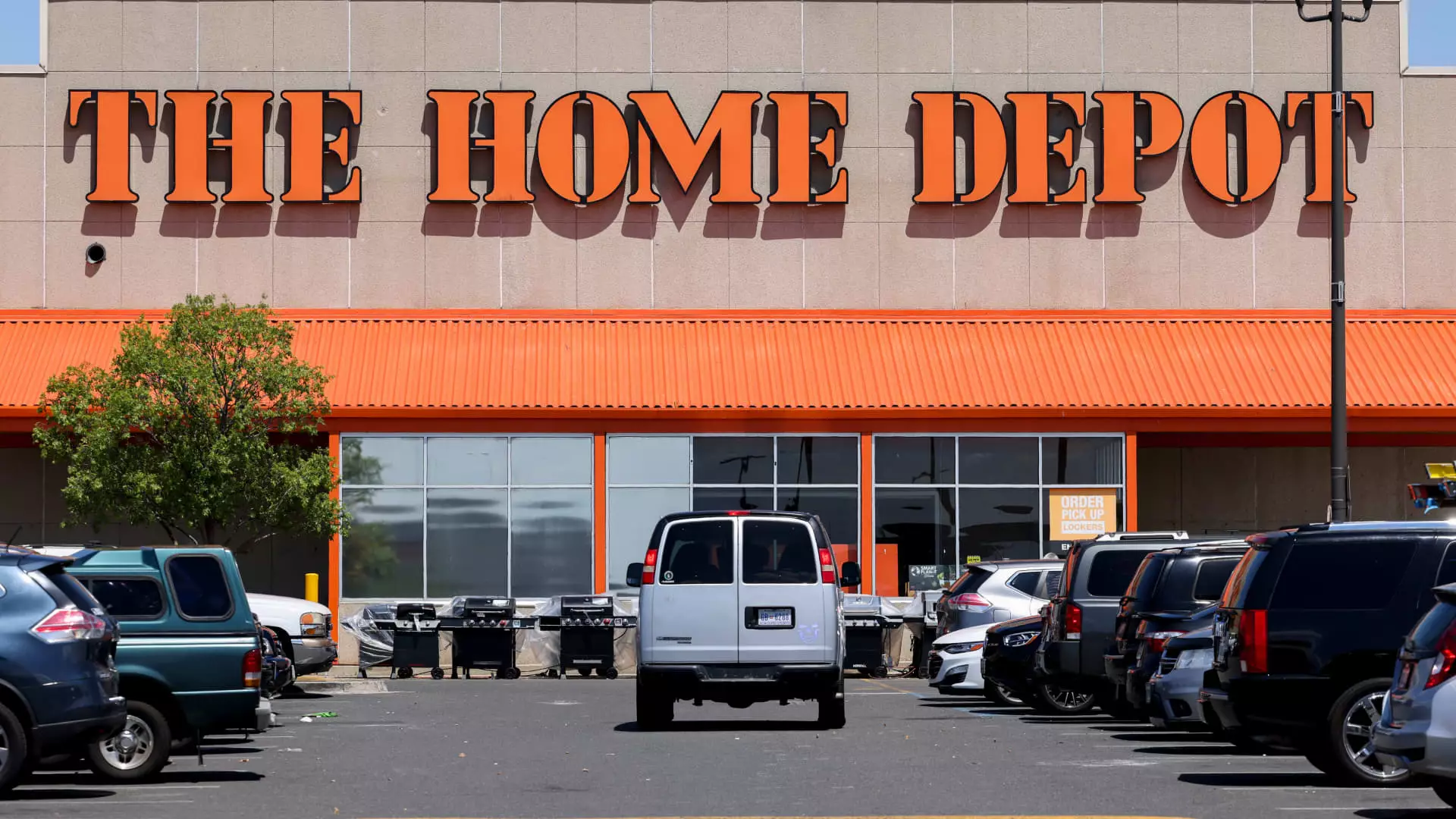As 2024 unfolded, Home Depot found itself grappling with a volatile retail environment significantly impacted by soaring interest rates and a wary consumer base. The initial months of the year displayed a stark stagnation in performance, largely due to elevated borrowing costs that curtailed major home improvement initiatives. During this phase, potential home improvement shoppers hesitated to undertake sizable projects, negatively affecting Home Depot’s stock. However, as the year progressed, a recovery narrative began to materialize, with closing quarters promising renewed vitality due to shifting economic indicators.
In the early installments of 2024, investors watched with bated breath as economic forecasts hinted at future Federal Reserve rate reductions. The anticipation of rate cuts began to alter market sentiments—by March, cautious optimism spurred a modest rise in Home Depot’s stock prices. Unfortunately, February’s momentum proved fleeting, and investor expectations recalibrated by May, anticipating slower-than-expected economic rescue efforts. A crucial inflection point occurred in mid-September when the Federal Reserve signaled the inception of its monetary easing policy with a significant 50 basis point rate cut, igniting hope concerning the housing market’s dormant turnover rates.
Following the change in the Fed’s monetary stance, Home Depot’s stock price experienced a noticeable uptick, rallying to an all-time intraday high of nearly $440 on November 26. Yet, subsequent trading sessions highlighted volatility, resulting in a notable pullback exceeding 11% within a relatively stagnant S&P 500 landscape. Home Depot maintained visibility and relevance, retaining a position as one of Jim Cramer’s foundational stock holdings, reflecting continued confidence among market analysts despite the fluctuations.
Our investment strategy aligned with the broader market trend, prompting us to establish a position in Home Depot in early September. The prevailing sentiment was primarily driven by expectations that declining mortgage rates could catalyze revivals in the beleaguered housing sector. Nevertheless, subsequent rate cuts from the Fed, accumulating to a total of 100 basis points throughout 2024, did little to ameliorate the overarching high yield environment, which kept mortgage rates elevated and dampened the anticipated growth in housing formations—a critical segment for Home Depot’s business model.
As we transition into the prospects of 2025, early indicators suggest Home Depot is on the cusp of a significant revival. Insights gleaned from the company’s third-quarter results, shared in mid-November, testify to an inflection point shaping the business trajectory positively for the coming year. With increased housing turnover projected—primarily driven by a gradual decline in mortgage rates—Home Depot stands strategically positioned to capitalize on the surging demand for home improvement projects.
The anticipation surrounding two additional rate cuts by the Federal Reserve in 2025 is a critical consideration. Given that new home construction is expected to witness modest growth in the coming year, the existing older housing stock will become a focal point for consumers. This transition portends numerous opportunities for renovation work, continually establishing Home Depot as the primary destination for both professional contractors and DIY enthusiasts in pursuit of quality home enhancement supplies.
Home Depot’s superior positioning in the professional contractor segment, bolstered by its recent acquisition of SRS Distribution, places it ahead of competitors like Lowe’s, allowing the company to gain deeper market penetration amidst a recovering housing sector. Furthermore, if mortgage rates dip below the pivotal 6% mark, expectations suggest a return to positive comparable sales, potentially reversing the earlier sluggishness experienced in high-ticket project segments.
Risks and Considerations
Despite the cautious optimism, several risks loom that could impede Home Depot’s pathway to recovery. Sustained increases in longer-term bond yields, which typically correlate with mortgage rates, have the capacity to delay financial stabilization for Home Depot and hinder expected growth. Moreover, while the company could encounter challenges tied to tariff implications connected to its supply chains in Mexico, Canada, and China, its robust domestic sourcing—accounting for over half of its portfolio—offers a significant buffer against these risks.
2024 was a year of challenges that Home Depot adeptly navigated, with signs of hopeful recovery flickering on the horizon for 2025. The interplay of falling mortgage rates, increased housing turnover, and sustained consumer interest in home improvements could collectively set the stage for a remarkably transformative year for the company. Investors must remain vigilant and informed as they position themselves in anticipation of Home Depot’s potential resurgence in the competitive landscape of home improvement.

